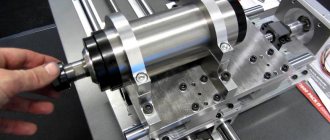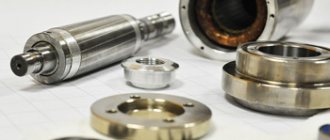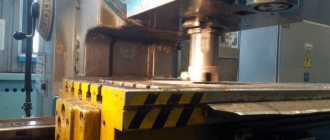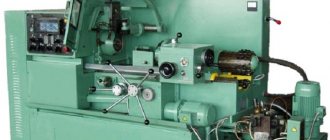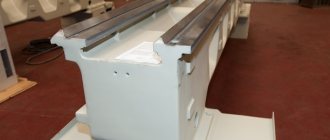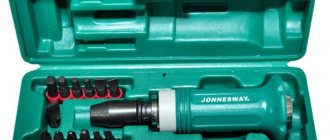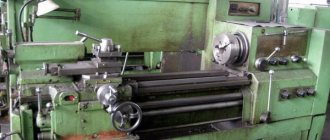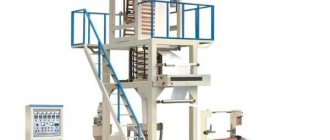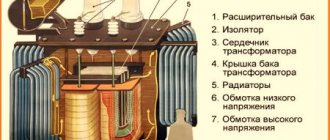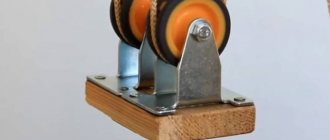Abrasive and cutting tools in metalworking machines play a major role in the process of processing workpieces. The quality depends on the characteristics of the device and how firmly it is attached.
As this device, a collet chuck is chosen, which is distinguished by a variety of variations and standard sizes depending on the type of shank and type of machine.
Operating principle of collet chucks
The collet chuck secures cutters and axial workpieces on milling equipment and CNC machines where fastening with high precision and minimal axle runout is required. Regardless of size or type, all types of collet chucks function according to the following principle:
- a self-clamping twisting mechanism presses on the end of the collet chuck;
- yielding to pressure, the collet moves into the cone-shaped opening, which leads to the closure of the petals, which are the working part of the part;
- the closed blades of the collet firmly hold the workpiece or tool shank.
Thanks to this type of fastening, the element is securely held and is perfectly cited. To remove the collet, the self-clamping nut is unscrewed enough to reduce the pressure on the tool, after which the workpiece is removed from the mount. For tightening and unscrewing, use a regular spanner.
How does the collet clamping mechanism work?
A milling or turning chuck, the basis of which is a collet clamp, works according to the following principle:
- A self-tightening nut, which is tightened, creates pressure on the end of the collet mechanism.
- Under the influence of pressure, the collet moves into a cone-shaped hole, which leads to compression of the petals that make up its working part.
- By contracting, the collet blades securely fix the tool shank or workpiece.
Simple collet clamp device
Accordingly, in order to remove a tool or workpiece from such a chuck, it is necessary to loosen the self-clamping nut, reducing the pressure it exerts on the collet.
The big advantage of collet chucks for a milling machine (or turning equipment), when compared with similar devices of other types, is that the tool or workpiece that is fixed in them is perfectly centered, which ensures minimal radial runout. In addition, to use a collet-type milling or lathe chuck, there is no need to use special keys, which, as a rule, are often lost.
Bars of various shapes can be clamped in the lathe chuck thanks to interchangeable collets
Collet chucks can be used to hold parts whose cross-sectional configuration does not match the shape of their entry hole. In order to fix such a part in the collet chuck, special cartridges are used, supplied with the device.
Design features
The structure of any collet chuck includes the following elements:
- a housing with which clamps are installed on milling cutters. Made of special hard alloys that are not subject to mechanical damage or deformation;
- a clamping nut that securely fixes the workpiece with the chuck, preventing it from moving or vibrating;
- a collet made in the form of a sleeve into which the end of the cutter fits. In the process of screwing the nut, the workpiece is evenly and firmly compressed, due to which it is securely fixed.
Expanding mandrels with rollers
Used for medium work. The clamping is carried out by jamming the rollers between the workpiece and the mandrel. The base surface of the workpiece can be processed according to 8-9th accuracy classes.
Dimensions, mm
| D (additional deflection according to WITH ) | D1 | D2 | d (additional deflection according to C) | L | l | l1 |
| 25 | 19 | 30 | 6,05 | 100 | 75 | 30 |
| 30 | 22 | 34 | 8,05 | 120 | 90 | 40 |
| 35 | 27 | 40 | 8,05 | 120 | 90 | 40 |
| 40 | 30 | 44 | 10,05 | 135 | 100 | 60 |
| 45 | 33 | 50 | 12,05 | 155 | 120 | 60 |
| 50 | 36 | 54 | 14,05 | 170 | 130 | 70 |
Advantages and disadvantages
There are several advantages that distinguish the collet chuck from other types of clamping mechanisms:
- fixation of the cutting tool over the entire area. When the scurvy nut is tightened, it evenly and equally firmly fixes a large area of the shank, thereby reducing vibration when working with the workpiece. Lateral load does not affect the position of the tool axis, which ensures excellent centering. With the help of collet chucks, metal workpieces are processed with high quality; when working with small parts, the product parameters are strictly observed;
- compatibility with many types of cutters. The multifunctionality of the housing design allows you to replace only the cutting part when working with all kinds of mechanisms. To do this, simply unscrew the nut and manually install a collet of the required diameter. This feature greatly simplifies the production process;
- minimal vibrations of the fixed part during the working process. The vibration of the inner cone in relation to the outer end part is 0.005-0.010 mm.
Among the disadvantages, the need to select collets for different diameters of the shank of the installed part or tool was noted.
Collet chuck design
The collet chucks under consideration for milling machines are structurally composed of three main elements:
- The housing is the base of the equipment and is intended for installation in the machine, as well as for fixing the collet with the cutting tool. In the part where the collet is inserted, it has a cone-shaped shape.
- Collet - is a sleeve made in such a way that the inserted shank of the cutter is evenly compressed after tightening the nut and thereby securely fixed. The use of collets with different internal diameters allows the same chuck to be used with many different cutters and other cutting tools.
- Clamping nut - designed to clamp the collet with the nozzle inside the body cone, as a result of which the cutter is crimped and fixed for the working process. The nut has slots for a special wrench supplied in the kit.
This design of a collet chuck for a milling cutter has its own characteristics, advantages and disadvantages.
Types and features
Depending on the area of application and the design features of the mechanism, collet chucks are divided into several types:
- ER collets. With two clamping points and a through hole, the most commonly used type;
- for taps. With a square groove compensating the axis;
- through and blind. The former process parts of unlimited length, the latter are suitable for workpieces of limited size, for example, workpieces in which one end is sealed;
- with one and two clamping sections. The second type, compared to the first, fixes the part more reliably by holding it at two points on the axis.
Collet chuck clamps come in two types:
- clamping The bushing is made in the form of several springy petals corresponding to the size of the fastener. The three-lobe bushing is designed for processing workpieces with a diameter of up to 0.3 cm, four-lobe bushings - from 0.3 to 8 cm, six-lobe bushings - for parts more than 8 cm in diameter;
- servers. The steel collet is equipped with three longitudinal grooves, forming petals with converging ends. The well-springing design feature allows for easy installation and reliable holding of a workpiece of the required diameter in the chuck. During operation, the feed mechanism with the screwed collet begins to move, which contributes to an even closer approach of the petals.
The feeding type of cartridge is more reliable, but requires a special key for fixation. Clamping types are used in cases where frequent replacement of cutters during operation is necessary.
Mandrels with one-sided collet
Mandrels with a single-sided collet are used for light work. The base surface of the workpiece must be processed taking into account the expansion of the collet to 0.5 mm. Recommended hole diameters for workpieces are 15 mm and above.
Dimensions, mm
| D | d (additional deflection for A/C) | d1 (additional deflection for A/G) | d2 | d3 | L | l1 | l2 | l3 |
| 15—20 | 6,5 | 17 | 22 | 27 | 36 | 19 | 7 | 17 |
| 21—25 | 8,5 | 23 | 28 | 33 | 47 | 22 | 10 | 20 |
| 26—30 | 10,5 | 28 | 33 | 38 | 54 | 24 | 12 | 22 |
| 31—35 | 10,5 | 33 | 38 | 43 | 61 | 26 | 16 | 24 |
| 36—40 | 12,5 | 38 | 43 | 48 | 74 | 29 | 20 | 27 |
| 41—45 | 16,5 | 45 | 50 | 55 | 82 | 32 | 20 | 30 |
How to choose the right collets?
In order to choose the right tool and avoid certain difficulties in the future, when choosing, take into account some characteristics of the collet:
- method of attachment to the spindle - direct installation or screwing onto the thread using an adapter;
- quantity, material, shape of cams;
- flange sizes;
- the type of alloy from which the element is made, depending on the type of work to be done.
It is not recommended to purchase tools from an unknown manufacturer, since such tools are not of high quality or have a long service life.
Mandrels with collet tightening through the spindle
Used for medium work. The base surface of the workpiece must be processed taking into account the expansion of the collet to 0.5 mm.
Dimensions, mm
| D | d(additional deflection A3/C3) | d1 | d2 | d3 | l1 | l2 | l3 |
| 45—49 | 26 | 29,5 | 60 | 40 | 35 | 25 | 175 |
| 50—54 | 35,5 | 60 | 45 | ||||
| 50—59 | 37,5 | 70 | 50 | ||||
| 60—64 | 41,5 | 70 | 54 | ||||
| 65—70 | 45,5 | 80 | 58 | 40 |
Areas of application
A fixing tool with replaceable collets is used on various types of machines where reliable fastening of cutters, axial workpieces, drills, etc. is required:
- CNC milling machines with a machining center;
- vertical and horizontal milling equipment;
- equipment for drilling, boring, milling groups.
The use of auxiliary adapters for fixing workpieces reduces the reliability of the production process, as well as the level of safety. Universal chucks with spring petals optimize the operator’s work, since to replace cutters and taps, simply open the collet and insert the part into the chuck.
Self-centering collet plugs
Self-centering collet plugs are used for medium-sized jobs. The collet is expanded by pressure from the center. The base surface of the workpiece must be processed taking into account the expansion of the collet to 0.5 mm.
Dimensions, mm
| D | d | d1 | L | l | l1 | l2 |
| 30—34 | 26 | M20x1.5 | 65 | 32 | 27 | 16 |
| 35—39 | 33 | M20x1.5 | ||||
| 40—44 | 37 | M24x2 | 75 | 38 | 31 | 17 |
| 45—49 | 43 | M30x2 | 80 | 22 | ||
| 50—54 | 48 | M42X3 | 90 | 48 | 41 | |
| 55—60 | 53 | M42X3 |
Range of machine tool chucks
You can purchase the following types of chucks for milling machines that are in demand in metalworking:
- collet;
- thread-cutting;
- drilling;
- power milling.
For each category of clamping tool, there is a special section where you can find detailed information about this or that equipment, as well as buy suitable chucks for metal milling machines.
Collet chucks
Universal chucks used for fixing axial cutting tools Collet chucks can be used to work with cutters and drills of the corresponding diameter. This type of clamp provides high precision work due to the uniform fixation of the tool with a spring collet, which is a mandatory structural part of chucks of this category. Due to this, a minimum level of runout of the cutting part is achieved, which increases processing accuracy and extends the service life of the drill or cutter.
Threading chucks
This type of milling chuck is designed to withstand the high instantaneous loads that can be achieved during the tapping process. The chucks have a mechanism for compensating axial and torque forces. Such critical loads can arise, for example, when a threading tool passes to the bottom of a blind hole, as well as during reverse movement.
In addition, thread-cutting chucks provide a quick-change mechanism for adapters, which allow you to expand the range of cutting tools of various diameters used.
Drill chucks
This type of equipment has a narrow scope of application and can be used exclusively for fixing drilling cutting tools of different diameters. The range includes chucks that allow you to work with drills with a diameter from 1 to 16 mm. It should be noted that this category of equipment is not intended for working with taps or cutters, since the chuck mechanism is not designed for significant radial loads.
Power milling chucks
This category includes chucks for metal milling machines that are designed for high loads. The equipment is used in conjunction with cylindrical collets. In addition, the design of the power milling chuck allows you to quickly change the working tool without applying significant effort. The equipment is universal, since milling chucks can be used in conjunction with adapters for different diameters of cutter shanks.
